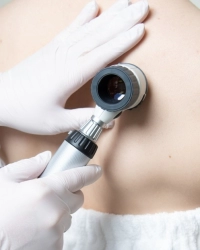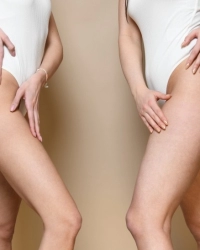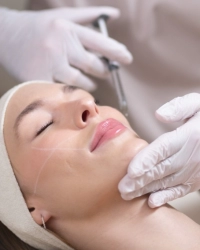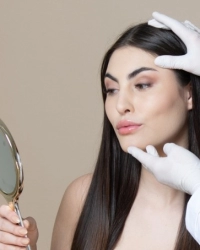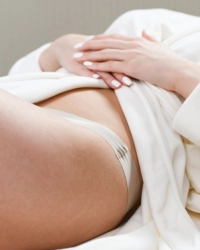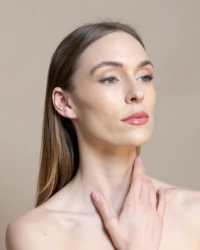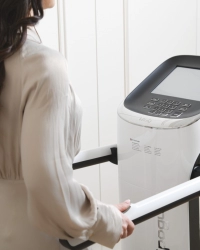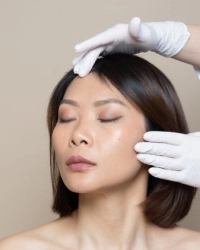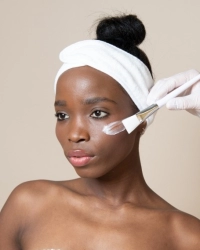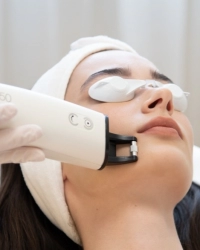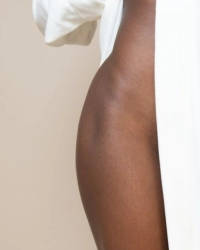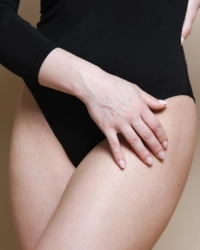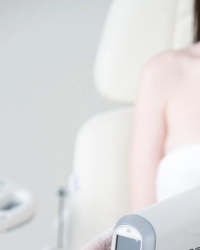Stretch mark removal with laser
Visibly reduce aesthetically unpleasant stretch marks on the abdomen, thighs, buttocks or hips with fractional laser treatment!
Striae: tearing of the connective tissues
Sudden growth, pregnancy or weight gain can cause the top layer of skin to tear, as the connective tissue that gives the skin its elasticity is unable to grow at the same speed. This is when stretch marks appear, which are actually tears in the connective tissue. The structure of collagen and elastin fibers that form the skin's connective tissue is damaged, and essentially give the skin its uniform appearance, elasticity and firmness. The characteristic stretch marks are formed as the skin tightens in a perpendicular direction. The marks are initially purplish-reddish in color (active striae) and later take on a pearly white hue (inactive striae). Stretch marks most commonly appear on the abdomen, thighs, buttocks, breasts, hips, lower back and upper arms.
Tissue renewal against stretch marks
Stretch marks can be soothed with fractional laser: the laser light induces tissue regeneration in the treated area. The connective tissue regenerates and collagen and elastin production between tissues increases, improving the skin's structure.



An extremely safe approach
Thanks to the treatment, bothersome marks are reduced and faded. If the stretch marks are older and have already become white, a longer course of treatment is needed. The younger the striae, the more effective the treatment is. Furthermore, the location of the striae will also affect the outcome of the treatment. If necessary, the efficiency can be enhanced by combining it with other complementary treatments (e.g. microneedling).
Procedure
The treatment is started with a consultation where we will examine the current condition of your stretch marks and your skin type to create an optimal treatment plan.
The first step of the procedure is to clean the skin surface of any debris, disinfect the area around the stretch marks and numb the skin. The laser is focused on the area to be treated: the high-energy laser beam breaks down damaged cells and stimulates tissue regeneration and the production of new, healthy cells. The micro-injuries in the skin can cause minimal discomfort during the treatment.
The treated area is coated with a special soothing cream at the end of the procedure. Further instructions will be given after the treatment is finished. Protective eyewear must be worn throughout the treatment.
Prices
The consultation fee is always payable above the treatment price.
| Dermatological consultation and examination | 35 000 Ft /session |
Appointment
Service
Selecting a location

Selecting a specialist

Stretch mark removal by laser is recommended in the following cases:
- stretch marks due to pregnancy,
- Striae due to sudden growth in early adolescence,
- stretch marks caused by weight gain or weight loss,
- stretch marks caused by genetic predisposition,
- striae caused by enlarged muscles.
Avoid solarium use and sunbathing in the previous 2 weeks before treatment.
The most important factor influencing the effectiveness of stretch mark removal by laser is the age of the striae: fresh, reddish-purple stretch marks can be treated more quickly and with fewer treatments than older, faded, atrophic striae. Stretch marks cannot be completely eradicated, but they can be effectively and visibly reduced, becoming almost undetectable.
During the treatment, the collagen fibers are reproduced and the tissue regenerates, which takes time. The process of new collagen formation is considered complete after 3 months. Further regeneration and improvement can be expected after a series of treatments, so it is worth comparing the final result with the initial condition after at least 6 months.
The number of treatments will depend on the condition and severity of the stretch marks, generally 3-6 sessions are recommended, with a break of 4-6 weeks between each session. During the entire treatment period, it is important to pay special attention to sun protection in the affected areas.
After the procedure, you may experience redness, have edema, mild swelling and fine peeling of the treated area, as well as sensitivity and an itching, burning sensation. The recovery time depends on the extent of the procedure, but generally the symptoms disappear after a few days. The skin surface should be treated with a special soothing cream. The treated area should be protected from sunlight for 3 months and the use of a high SPF sunscreen is essential. In addition sunbathing, as well as solariums, should be avoided.
The treatment should not be performed during pregnancy, breast-feeding, active skin infection or febrile illness, or when taking blood thinning or photosensitising medications.
